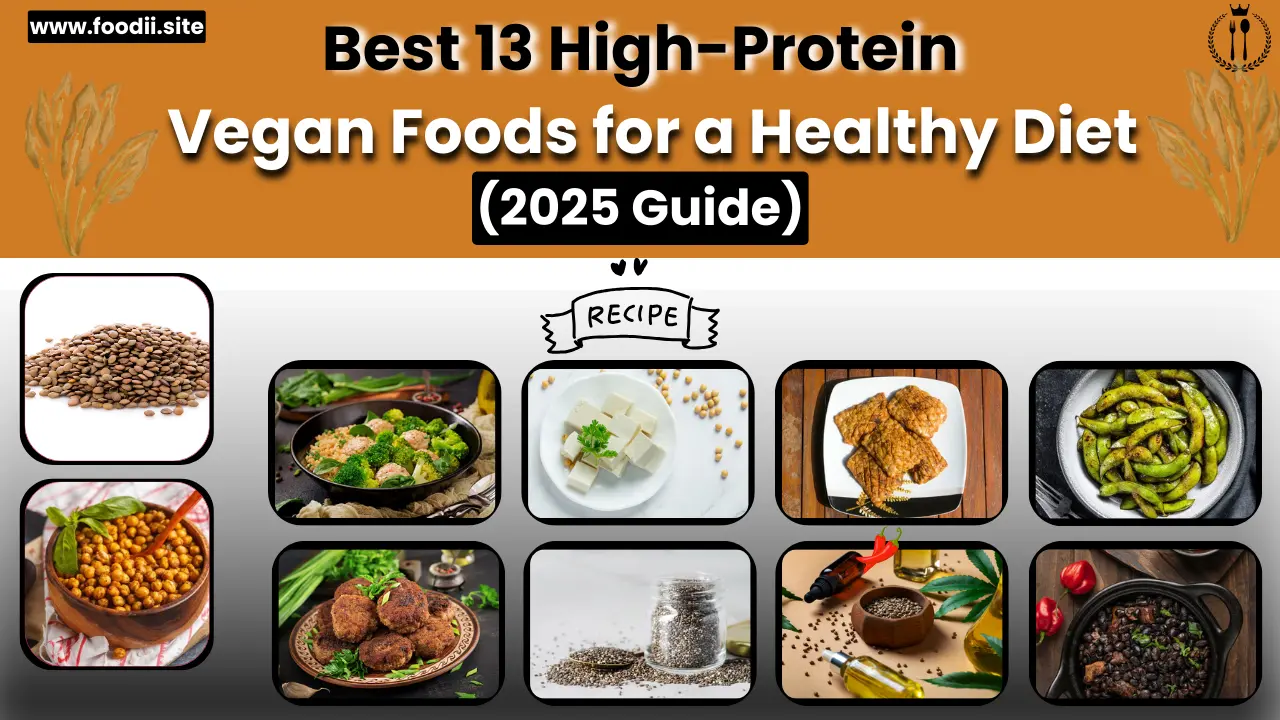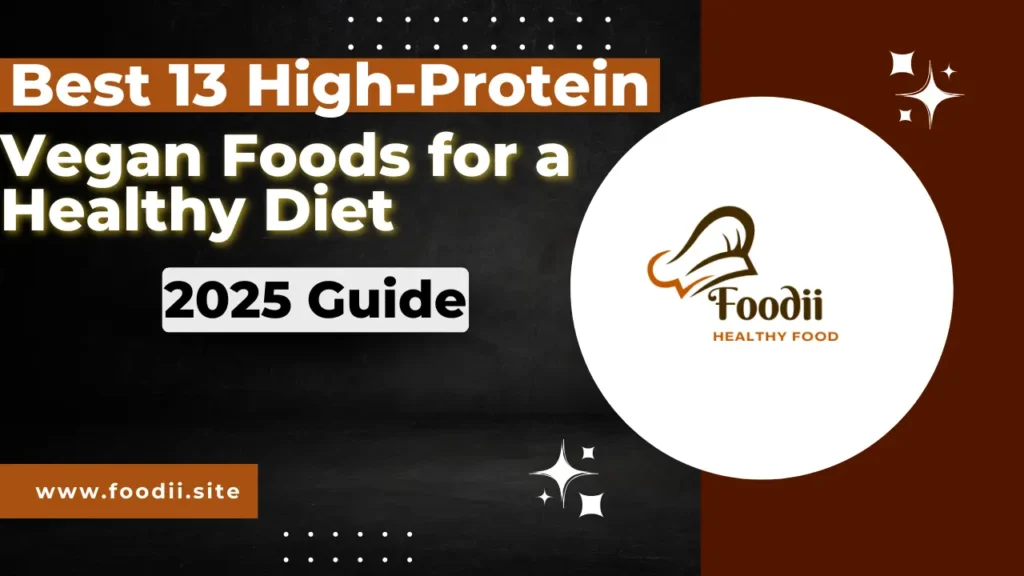Best 13 High-Protein Vegan Foods for a Healthy Diet (2025 Guide)

A plant-based life is no longer cool; it’s a lifestyle adopted by millions because of fears of health, ethics, and the planet. But perhaps the worst fear that those switching over to a vegan way of life have to worry about maybe protein consumption. The silver lining? If you think plant-based diets are low in protein, think twice! Most of the high-protein vegan foods can supply your body with all the amino acids needed. Within this guide, we will learn the top 13 protein-rich plant foods that are healthy and easy to incorporate into your daily lifestyle in 2025.
Lentils (18g protein per cup, cooked)
- Lentils are a good repository of protein, fiber, and nutritional power. They can be a big assistance in curries, salads, and soups. They also aid digestion and support heart health.
How To Use
- Use in soups and stews
- Make lentil patties or burgers
- Add to salad for a protein kick
Chickpeas (15g of protein per cup, cooked)
- Chickpeas or garbanzo beans contain protein, fiber, and minerals. When roasted, they can be a snack or, when pureed, a hummus. Chickpeas bring quality to any meal.
How To Use
- Use as spread on sandwiches or toast with hummus
- Roast as a crunchy snack
- Use in curries and salads
Quinoa (8g protein per cooked cup)
- A complete protein food with all nine essential amino acids. Gluten-free and can be used as a rice substitute.
How to Use
- Use as grain bowl base
- Add to soups or stews for health and texture
- Make porridge out of quinoa for breakfast
Tofu (20g protein per cup, firm tofu)
- Tofu is an ancient soybean plant protein. Iron- and calcium-rich with good penetration of flavors.
How to Use
- Stir-fry with vegetables
- Add to smoothies as extra protein
- Cook as a dinner meat alternative

Tempeh (31g protein per cup, cooked)
- Tempeh, a second soybean product, contains more protein than tofu because it is fermented, which also aids digestion.
How to Use
- Grill or pan-fry for sandwiches and wraps
- Crumble on salads or grain bowls
- Marinate and roast as a meat alternative
Edamame (18g protein per cup, cooked)
- Immature soybeans that are full of protein, fiber, and good fat, edamame are excellent, simple snacking or meals.
How to Use
- Steam and season as a snack
- Add to noodle or stir-fry dishes
- Puree into a high-protein dip
Seitan (21g protein per 3.5 ounces)
- Seitan or wheat gluten, it is one of the richest plant sources of protein. Seitan’s texture being almost like that of meat makes it an ideal vegan alternative.
How to Use
- Use in stir-fries, stews, or sandwiches
- Grill or bake and make meaty
- Slice and add to salads
Chia Seeds (5g protein per 2 tablespoons)
- Chia seeds are a superfood that holds protein, omega-3 fatty acids, and fiber.
How to Use
- Add to oatmeal or smoothies
- Make chia pudding with plant-based milk
- Use as topping for yogurt substitutes or salads
Hemp Seeds (10g protein in 3 tablespoons)
- Hemp seeds are rich in protein and healthy fats and are a great superfood.
How to Use
- Add to smoothies or salads
- Blend into protein shakes
- Add to yogurt substitutes or oatmeal
Black Beans (15g protein per cup, cooked)
- Black beans not only are a quality protein, but a quality fiber and antioxidant too.
How to Use
- Add to burritos or tacos
- Add to soups
- Prepare black bean burgers
Almonds (7g protein per 1/4 cup)
- Almonds are a protein nut and are a quality healthy fat and source of vitamin E too.
How to Use
- Eat as a snack
- Add to oatmeal or smoothies
- Substitute almond butter into recipes
Pumpkin Seeds (8g protein per 1/4 cup)
- Pepitas or pumpkin seeds are a protein snack that is rich in magnesium and zinc.
How to Use
- Use as a snack
- Garnish salads or soups
- Garnish over pesto or dips
Peas (9g protein per cooked cup)
- Green peas are a great source of protein and can be used in numerous meals in their versatile state.
How to Use
- Add to soup and stews
- Add to pasta dishes
- Make pea puree or dips
For More Recipes> fOODii.site
FAQs
Is it possible to get enough protein on a vegan diet?
Careful selection of the vegan diet which contains a variety of protein foods such as lentils, quinoa, tofu, and nuts suffices with protein for a majority of people.
Which plant food protein is the most nutritional?
Tempeh, lentils, and seitan are among the best because they contain high-quality protein and a high amino acid score.
How can I get vegan protein foods to be more satisfying?
Pair protein foods with fat and fiber, like pairing whole grains, nuts, and seeds with meals.
Are plant proteins as good as animal proteins?
Yes! Even though some plant proteins do not contain all of the amino acids, by consuming a variety of different plant foods, you will receive all of the amino acids.

Conclusion
The following 13 high-protein vegan foods contain all the nutrients your body requires for building muscle, providing energy, and overall health. Adding these foods to your menu allows you to have a sustainable and healthy diet in 2025 and the years to come.
Call to Action
Hungry for more high-protein vegan recipes? Look for our newest posts! Try out these high-protein foods and incorporate them into your meals and let us know in the comments below what your go-to recipes are!Make sure to pass this guide on to your friends who want to boost protein on a vegan diet!
Also Visit >healthline.com